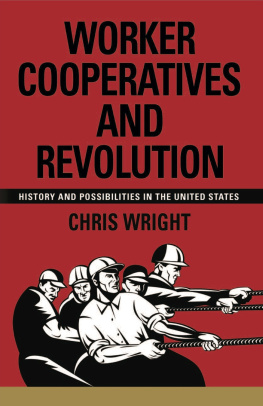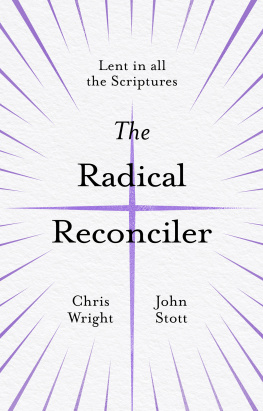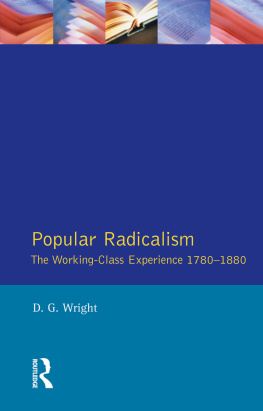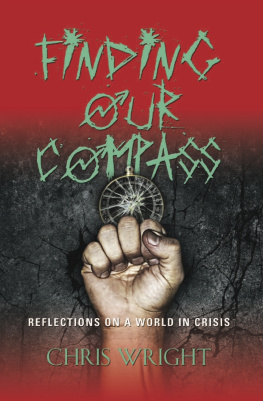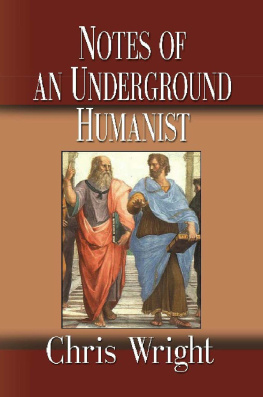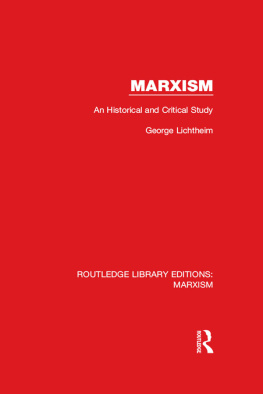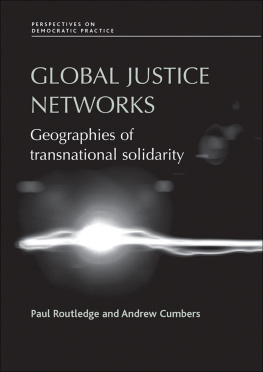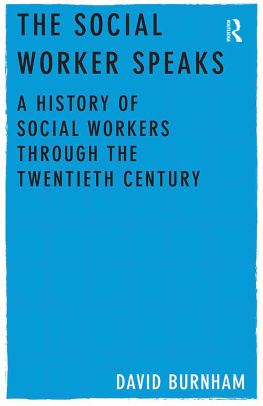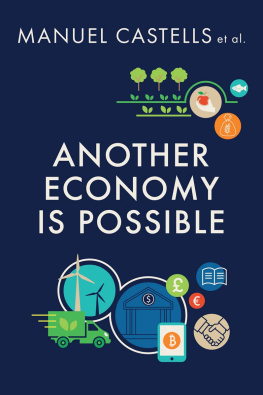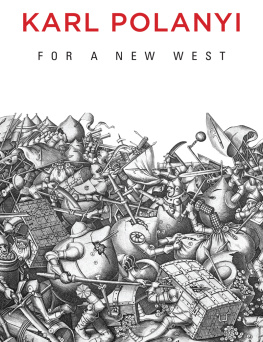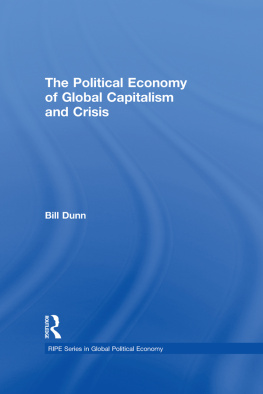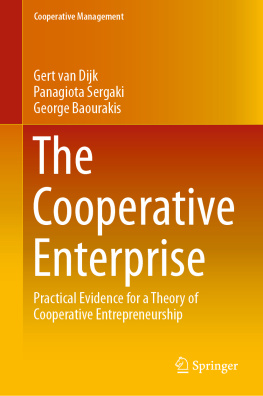WORKER COOPERATIVES AND REVOLUTION HISTORY AND POSSIBILITIES IN THE UNITED STATES Chris Wright
Copyright 2014 Chris Wright ISBN 978-1-63263-432-0 All rights reserved. No part of this publication may be reproduced, stored in a retrieval system, or transmitted in any form or by any means, electronic, mechanical, recording or otherwise, without the prior written permission of the author. Published by BookLocker.com, Inc., Bradenton, Florida. Printed in the United States of America on acid-free paper. BookLocker.com, Inc.
TABLE OF CONTENTS CHAPTER ONE - INTRODUCTION 5 CHAPTER TWO - THE SOCIOLOGY AND ECONOMICS OF WORKER COOPERATIVES 22 CHAPTER THREE - WORKER COOPERATIVES IN
AMERICAN HISTORY . 78 CHAPTER FOUR - MARXISM AND THE ALTERNATIVE ECONOMY 129 Theory .. 135 Practice . 175 CHAPTER FIVE - NEW ERA . 214 CHAPTER SIX - CONCLUDING THOUGHTS ON REVOLU TION.. 245
CHAPTER ONE INTRODUCTION The capitalist mode of production does not permit a socially efficient allocation of resources. 245
CHAPTER ONE INTRODUCTION The capitalist mode of production does not permit a socially efficient allocation of resources.
Resource-allocation is determined by the twin structural imperatives of having purchasing power (on the demand side) and of chasing profit (on the supply side). If one has a need but lacks the money to back up that need, as for example the billion children worldwide living in poverty do, ones need will not be met by the market. Conversely, investors will pursue only those projects that have the potential to make a profit. For instance, many areas of rural America were still without electricity in the ear ly 1930s because investors had judged that the meager profits to be made did not justify the costs of supplying electricity to these re gions; hence the New Deals Rural Electrification Administration and the cooperatives that sprang up to supply electricity. Broadly speaking, the dynamic between capital and wage-la- bor, as well as that between millions of atomized units of capital each seeking profit at the expense of every other, makes for a very unstable and crisis-prone economy. Capitals interests lie in paying the worker as little as possible and in preventing him from exercis ing control over the process of production, while the worker wants to be paid as much as possible and to exercise greater control over production.
This simple structural antagonism is the basis for the whole history of the labor movement, the continual confrontations, the unions and union-busting, the private armies deployed to break up strikes, the government suppression of labor parties, the revolu tionary social movements, the constant and pervasive stream of business propaganda, and the periodic bursts of cooperative eco nomic activity among the ranks of labor. At the same time, the vicis Deward Clayton Brown, Electricity for Rural America: The Fight for the REA (West- port, CT: Greenwood Press, 1980).
situdes of the capitalist economy leave many people unemployed at any given time, unable to find work because their skills and needs are not valued or because of insufficient investment in their geo graphical or professional area, or because of outsourcing to coun tries where labor is cheaper, or for other reasons. In recent decades, the liberalization and financialization of the international economy has entailed a tendency for corporations to seek profits not through investment in industry and infrastructure development but through financial speculation. This sort of investment, undertaken on the principle of Aprs moi le dluge , is not only risky but essentially adds no jobs and no real wealth to the economy, which tends to stagnateor to contract, after it finally becomes evident that all these financial transactions have been grounded in the baseless fab ric of a vision (to quote Shakespeare). So, millions more people are thrown out of work as capital withdraws itself from further invest ments, and government initiatives are required to set the economy on track againfor more financial speculation and more stagnation, as opposed to contraction.
However, even before the orgies of neoliberalism it was obvi- ous that capitalism is not socially efficient. Market failures are everywhere, from environmental calamities to the necessity of the states funding much socially useful science to the existence of pub- lic education and public transportation (not supplied through the market) to the outrageous incidence of poverty and famine in coun tries that have had capitalism foisted on them. All this testifies to a market failure, or rather a failure of the capitalist, competitive,
See John Bellamy Foster and Robert McChesney, Monopoly-Finance Capital and the Paradox of Accumulation, Monthly Review 61, no. 5 (October, 2009): 120; and John Bellamy Foster and Robert McChesney, The Endless Crisis: How Monopoly-Finance Capital Produces Stagnation and Upheaval from the U.S.A. to China (New York: Month- ly Review Press, 2012).
profit-driven mode of production, which, far from satisfying social needs, multiplies and aggravates them.
profit-driven mode of production, which, far from satisfying social needs, multiplies and aggravates them.
This should not be surpris ing. An economic system premised on two irreconcilable antago nismsthat between worker and supplier-of-capital and that be tween every supplier-of-capital and every other and which is pro- pelled by the structural necessity of exploiting and undermining both ones employees and ones competitors in order that ever greater profits may be squeezed out of the population, is not going to lead to socially harmonious outcomes. Only in the unreal world of standard neoclassical economics, which makes such assumptions as perfect knowledge, perfect capital and labor flexibility, the ab sence of firms with market power, the absence of government, and in general the myth of homo economicus the person susceptible of no other considerations than those of pure economic rationality is societal harmony going to result. From the very beginning of its history, the manifold social evils of capitalism have given rise to oppositional movements. The one I am concerned with in this work is cooperativism, specifically worker cooperativism. There are many other kinds of cooperatives, including those in the credit, agriculture, housing, insurance, health, and retail sectors of the economy.
But worker cooperativism is po tentially the most oppositional form, the most anti-capitalist, since it organizes production in anti-capitalist ways. Indeed, the relations of production that constitute worker cooperativism also define so cialism in its most general sense: workers democratic control over production and, in some varieties, ownership of the means of pro duction (whether such ownership is organized individually, by own ing shares of equity, or collectively). As one common formulation states, in the worker co-op, labor has power over capital, or labor Capitalists may indeed reach a modus vivendi to alleviate the mutually harmful conse- quences of competition, for instance by fixing prices, but the potential always remains for the antagonism of interests to reassert itself.
hires capital. In the conventional business, by contrast, capital has power over labor, i.e., capital hires labor. None of the other kinds of cooperativism directly rejects these capitalist power-relations, al though some may signify an implicit undermining of capitalism in sofar as the co-op exists not primarily for the sake of maximizing profit but for satisfying some social need.
It must be understood that a societys dominant mode of mater- ial production, i.e., the hegemonic method of organizing the rela tions of material production (such as manufacturing and food pro duction), conditions the overall character of the society more than any other of its features does. This is because the society is erected on the basis of material production; the first task for a society is to reproduce itself in its specific form, which presupposes the repro duction of a set of production relations. Social relations will tend to evolve that make possible the reproducing of the relations of pro duction. In the spheres of economic distribution, of politics, of sexu al relations, of intellectual production, and so on, social structures and ideologies will tend to predominate that are beneficial, func tionally selected with respect to the dominant mode of production. Therefore, a movement that aims for fundamental transformations in society should not limit itself to the sphere of distribution, as do consumer co-ops, credit unions, and housing co-ops, nor the sphere Philosophers have debated interminably the validity or invalidity of functional expla- nation and the notion of functional selection, but in fact functional explanations are simply shorthand versions of causal explanationsas in Darwinism, whose talk of the functions of particular biological adaptations is a way of rephrasing the causal doctrine of natural selection by means of random variation. A. A.

